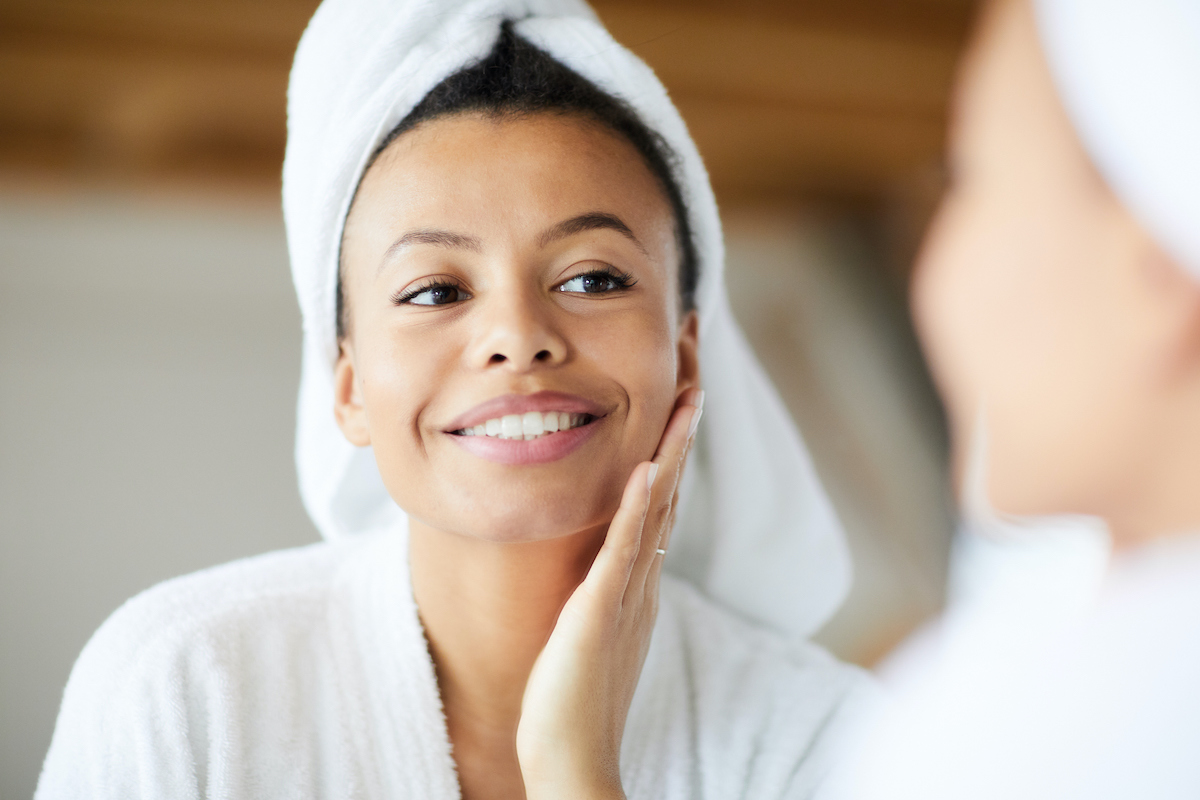This post may contain affiliate links, which provide a small commission to us when you purchase, at no additional cost to you. Thank you for helping to support our efforts in providing you the best, most up-to-date information for GloWell.
When it comes to skincare, there are a few ingredients dermatologists recommend time and time again. Hyaluronic acid, vitamin C, retinoids, and salicylic acid are routinely touted as the gold standards in skincare, and they have years of research proving their effectiveness. (Hey Pique teas, we see you and we still love you.) These ingredients do everything from plump up skin to provide antioxidant protection to smooth wrinkles to fight acne.
Beyond these powerhouses, though, lie a slew of skincare ingredients that have recently exploded onto the beauty scene. In fact, you’d be hard-pressed to shop for products these days without coming across buzzwords like CBD and bakuchiol on the labels.
But are these ingredients really as good as their tried-and-true counterparts? Let’s delve into the research.
CBD
Cannabidiol, a.k.a. CBD, is the non-psychoactive part of the cannabis plant. When taken internally, it can help relieve chronic pain and anxiety.
What Are the Potential Skin Benefits?
“CBD has anti-inflammatory properties, which can help improve conditions such as eczema and other skin irritation,” says Dr. Susan Bard, MD, New York City-based dermatologist.
“It also is rich in antioxidants, which can help with environmental damage.” One study even found that topical CBD could help reduce excess oil and curb acne.
Is It Worth the Hype?
That remains to be seen. It’s important to note that research is currently in its very early stages. “There are a very limited number of studies on CBD and most are on mice or well-controlled, which don’t necessarily prove a cause and effect,” says Dr. Caren Campbell, MD, San Francisco-based dermatologist.
Campbell also points out that CBD products aren’t regulated by the Food and Drug Administration, meaning you really can’t be sure of what you’re getting in terms of quality.
“Formulations on the market do raise concerns as they are mostly oil solutions and emulsions which do not properly penetrate the skin barrier,” she adds. “There are newer formulations in development that are nanoparticles so that they are better able to penetrate the skin’s barrier.”
Bakuchiol
Bakuchiol is a plant extract that comes from the psoralea corylifolia plant.
What Are the Potential Skin Benefits?
This ingredient is often lauded as being a gentler retinol alternative. A study published in the British Journal of Dermatology found that bakuchiol has comparable effects to retinol when it comes to improving photo-aging.
“It touts similar benefits but is much less harsh and better tolerated,” says Bard. “Much like retinol, it promotes skin turnover and stimulates collagen production, thereby diminishing fine lines, pigmentation, and improving texture and tone.”
Is it Worth the Hype?
Possibly, for people with sensitive skin, says Bard. But overall, dermatologists still prefer retinoids (which are stronger, and more effective, than retinols) for all skin types.
“I still believe retinoids like tretinoin, Tazorac, or Differin, are the better options over bakuchiol at this time based on what we know,” says Campbell. “Most people who use retinoids correctly can tolerate them just fine.”
Using a retinoid correctly means starting with only a pea-sized amount of a low-strength version one or two times a week and slowly adding a day in every few weeks and increasing to a higher-strength over time, Campbell explains. “Applying moisturizer on top helps mitigate dryness and irritation while not deactivating the retinoid,” she adds.
Regardless of what ingredient you decide to use, Bard suggests spot-testing any new products before adding them to your routine if you have sensitive skin.
Prebiotics and Probiotics
Prebiotics and probiotics work together to keep your gut healthy. Prebiotics, a type of ingestible fiber, feed probiotics, or healthy bacteria. You can find prebiotics in foods like asparagus or yams, while probiotics are typically found in things like sauerkraut, yogurt, and kimchi.
(You can also try any of these teas for added digestion support)
What Are the Potential Skin Benefits?
The thinking is that when applied topically, prebiotics and probiotics could help support your skin microbiome. “Prebiotics create an environment that promotes growth of desirable bacterial flora on the skin,” says Bard, while “probiotics contain live healthy bacteria to repopulate the skin flora.” This could be particularly beneficial for people dealing with inflammatory skin conditions, like acne, eczema, and psoriasis.
Are They Worth the Hype?
It’s still too early to tell, says Campbell, as research on topical prebiotics and probiotics is limited. Per one 2019 study published in Dermatology Online Journal, “topical probiotics have shown efficacy in a number of limited trials, particularly those involving the treatment of acne, atopic dermatitis, and rosacea. However, there is a paucity of literature on the safety profiles, mechanistic action, and therapeutic potential of topical probiotic products.”
PHAs
Polyhydroxy acids, or PHAs for short, are acids used to exfoliate similarly to alpha hydroxy acids (AHAs) and beta hydroxy acids (BHAs), explains Bard.
What Are the Potential Skin Benefits?
Use of chemical AHAs like glycolic, lactic, and malic acids and BHAs (salicylic acid) have been shown to result in smoother, clearer, brighter skin.
PHAs are gentler than other chemical exfoliants, making them a potential must-have for sensitive skin types. They “are less irritating to the skin as they do not penetrate the skin’s barrier as deeply,” says Campbell. That’s because the molecules are larger than AHAs and BHAs, says Bard. Campbell adds that PHAs also show some moisturizing and antioxidants benefits too.
Are They Worth the Hype?
It depends on your skin type. “If you have rosacea or eczema, these might be better options for chemical exfoliation,” says Campbell. If you get regular breakouts, though, you’re better off using a stronger acid. “Those with acne who use peels would benefit more from peels that penetrate deeper into the pore and break up any clogs, i.e. salicylic acid,” says Bard.
In general, Campbell prefers chemical exfoliants, like AHAs, BHAs, and PHAs, over manual brushes or scrubs because “they are a bit safe for the skin in most cases,” she says.











Join the GloWell Community on Social!
Don't risk missing a single thing. Follow us on social and become part of the GloWell community.